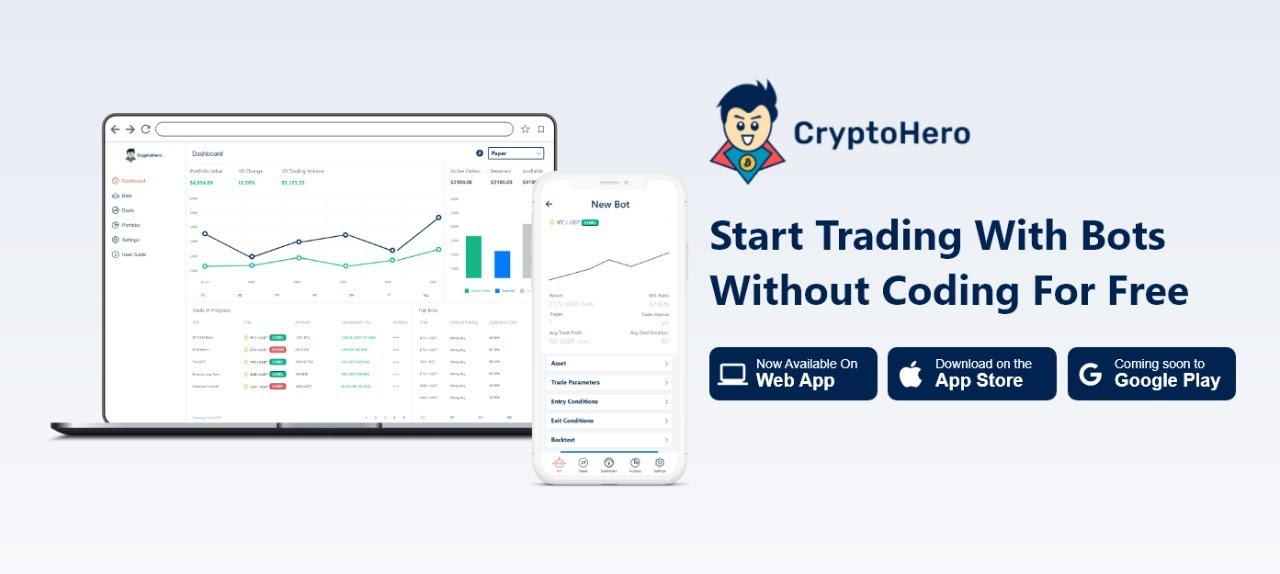Novum Alpha - Daily Analysis 15 June 2021 (10-Minute Read)
Investors have been given fair warning of the likely timetable for any sort of U.S. Federal Reserve tapering of asset purchases, and are looking for signals ahead of a key policy meeting today as to when that tapering and interest rate liftoff will occur in 2023.
|
A terrific Tuesday as we head into the middle of the month of June!
In brief (TL:DR)
|
In today's issue...
|
Market OverviewStay on target, stay on target...
Investors have been given fair warning of the likely timetable for any sort of U.S. Federal Reserve tapering of asset purchases, and are looking for signals ahead of a key policy meeting today as to when that tapering and interest rate liftoff will occur in 2023.
Expectations remain high that the Fed won't blink.
Despite volatility in bond markets earlier this year, U.S. Treasury yields have since settled within a relatively tight band and investors appear to have calmed.
Commodity prices are also cooling and equities have rocked fresh records, which all feed well into the Fed narrative that inflation is only a momentary blip in an otherwise positive story of economic recovery.
Over in Asia markets were a mixed bag with big winners like Tokyo's Nikkei 225 (+0.71%) and Sydney’s ASX 200 (+0.98%) up sharply on bets that the Fed would continue with its asset purchases, while Seoul's Kospi Index (-0.03%), was down slightly and Hong Kong's Hang Seng (-1.15%) saw a sharper pullback after a holiday.
|
Did you miss us at the World Family Office Forum? Watch it here... |
 |
 |
1. Bearish on the Dollar? How can you cash in on it?
Like it or not, the world tends to think in dollar terms. The emoji for money is the greenback and when villains rob a bank, the cartoon loot almost always carries the dollar sign.
But for a country that buys more than it produces, the U.S. current account deficit needs to be financed and one way is through direct foreign investment.
While many us may think of foreign investment as applying more to developing countries, where multinationals come in to build power stations or supply bottled water, until 2019, the U.S. was the largest recipient of foreign direct investment, the bulk of it in the form of purchases of U.S. securities, and that favorite of investors, U.S. Treasuries.
Naturally there is a limit to how much debt the U.S. can sell, because at some point, the interest on the bonds alone would consume the entire U.S. budget.
So why don’t bond holders demand higher interest payments from the profligate United States?
Part of the reason is that the U.S. Federal Reserve intervenes by purchasing U.S. government debt, around US$120 billion a month (but who’s counting?) to keep borrowing costs low, but the other is the absence of good alternatives.
But there is one release valve and that’s the dollar.
If the greenback falls (relative to other currencies), it’s like a blue light special on everything in the U.S. – its securities, its manufactures, its companies – everything goes on sale for the rest of the world and sucks in assets, keeping its budget imbalance in order.
When economists speak of a declining dollar, it’s important to consider what it needs to decline against.
While the U.S. continues to lead the world in vaccinations and growth, capital will continue to flow towards dollar assets, but that could change.
As the rest of the world emerges from the pandemic, synchronized global growth could send capital beyond these United States.
But consider that it’s not just the U.S. which had to take on extraordinary amounts of debt to tide through the global pandemic, much of the rest of the world had to as well.
Since the financial crisis, equity prices have been on a seemingly relentless rally (and they don’t even have to be good companies).
With global investors long on risk, the demand for safe assets to offset those elevated levels of risk is greater than ever and for this, U.S. Treasuries are the asset of choice bar none.
Whilst naysayers may point to the fact that the U.S. Federal Reserve is itself buying the government’s own debt, the Japanese and German central banks have bought even more of their own sovereign bonds.
If nothing else, U.S. Treasuries have become a growing player in an increasingly smaller selection of truly “safe assets”.
When it comes to the dollar and U.S. debt, it’s not perfect, but when investors look at the alternatives, there just aren’t that many out there.
But if the dollar declines, how should investors hedge themselves?
By buying as many of the companies that generate their revenues abroad but sell their shares in dollars – tech companies are an obvious choice, like Amazon (+1.11%) and Google (+0.77%), but so are Chinese companies that are listed on American exchanges like Alibaba (+1.10%) and Tencent (-0.05%).
And it’s the latter that offer far more value when measured against more expensive-looking U.S. tech giants.
After being beaten down by Beijing's firmer stance on its tech giants, these Chinese firms are poised for greater growth.
|
Did you miss us at the World Family Office Forum? Watch it here... |
 |
 |
2. Inflation? Not if Commodity Prices are Anything to Go By
The U.S. Federal Reserve gathers to meet later today, and amongst the somber suits are bound to be some smug smiles beneath the veneer of the strait-laced central banking conclave.
For months, U.S. Federal Reserve Chairman Jerome Powell has reiterated that the Fed would accept higher prices, the so-called “New Monetary Policy” framework that would make up for previously lower periods of inflation.
But record levels of inflation reported by the consumer price index last week failed to roil bond markets, if nothing else, U.S. Treasury yields actually slipped (yields fall when bond prices rise), in signs that investors had taken to heart the Fed’s guidance on inflation.
And certain corners of the market that had led to speculation of a commodities supercycle have since cooled.
Lumber has slumped 40% since its peak in May (sounds like Bitcoin) and copper has eased from its all-time-high.
Corn has dropped to near its lowest level since mid-April and soybeans, a key component of animal feed, has also slipped.
To be sure, there are plenty of corners of the economy where supply disruptions and record demand have left prices at multiyear highs, but for a central bank deciding whether to scale back policy assistance on the basis of rising prices, some of the market signals at least offer reason for the Fed to continue being patient.
U.S. Treasuries, a key indicator of inflation expectations, were volatile in the earlier part of the year, on inflation concerns, but have since settled comfortably within a manageable band and equities have rallied to fresh all-time-highs.
The Fed, for all intents and purposes, appears to have got it right.
|
 |
 |
3. Guess who's back? Bitcoin!
With more twists and turns than a daytime soap opera, like Bitcoin through the blockchain, so are the Days of Our Lives.
Fans of the long-running American soap opera Days of Our Lives will know that it’s not uncommon to have the same actor play different roles on the same show (don’t worry there are captions to help guide viewers) or different actors playing the same role.
Which is why it should come as no surprise that the digital asset drama that is Bitcoin, can see Elon Musk go from champion to villain to champion again – what a great show and certain to be renewed for another season!
After a volatile weekend which saw tweets from Musk lift Bitcoin past US$39,000, the benchmark cryptocurrency cleared US$40,000, its highest level in over two weeks in U.S trading hours.
Rising past US$41,000 at one stage, Bitcoin is up around 9% since last Friday.
If Bitcoin continues to hold above US$40,000, technicians are looking to US$42,500 as the next important level of resistance to mark a bullish turn as Bitcoin will need to breach its 200-day moving average before it rallies toward US$50,000.
Whilst the April rally saw Bitcoin hit an all-time-high of around US$64,000, driven primarily by the bullish moves of Tesla (+1.28%) and the listing of Coinbase Global (+6.78%), fresh factors will need to come into play to revive the fortunes of the world’s largest cryptocurrency by market cap.
One possibility of course is a favorable decision by the U.S. Securities and Exchange Commission which is continuing to deliberate on approving several Bitcoin ETFs.
Bitcoin has lost almost 30% since mid-April, a pullback that some blame on the public rebuke of Bitcoin’s environmental impact by Tesla’s Elon Musk, and decision to stop accepting the cryptocurrency as payment for its electric vehicles.
Musk has since backpedaled on his views and said that Tesla would go back to accepting Bitcoin once at least 50% of Bitcoin was mined with clean energy.
And this week, early Bitcoin supporter, billionaire hedge fund manager Paul Tudor Jones, re-endorsed his bet on the cryptocurrency in a television interview.
In an interview with CNBC, Tudor Jones said,
“I like Bitcoin as a portfolio diversifier. Everybody asks me what should I do with my Bitcoin? The only thing I know for certain, I want 5% in gold, 5% in Bitcoin, 5% in cash, 5% in commodities.”
Another week and more drama, stay tuned.
|
What can Digital Assets do for you?While markets are expected to continue to be volatile, Novum Alpha's quantitative digital asset trading strategies have done well and proved resilient.
Using our proprietary deep learning and machine learning tools that actively filter out signal noise, our market agnostic approach provides one of the most sensible ways to participate in the nascent digital asset sector.
If this is something of interest to you, or if you'd like to know how digital assets can fundamentally improve your portfolio, please feel free to reach out to me by clicking here.
|
 |
|
Looking to trade cryptocurrency yourself? Then why not try CryptoHero, a member of the Novum Group.
Enjoy some of the high performing algorithms that Novum Alpha uses, absolutely free!
Because you can't be up 24 hours trading cryptocurrency markets, CryptoHero's free bots do the trading for you.
Simple and intuitive for crypto beginners to set up and run, CryptoHero is currently available on the Web and iOS with an Android version ready in 2021.
|
|
Jun 15, 2021